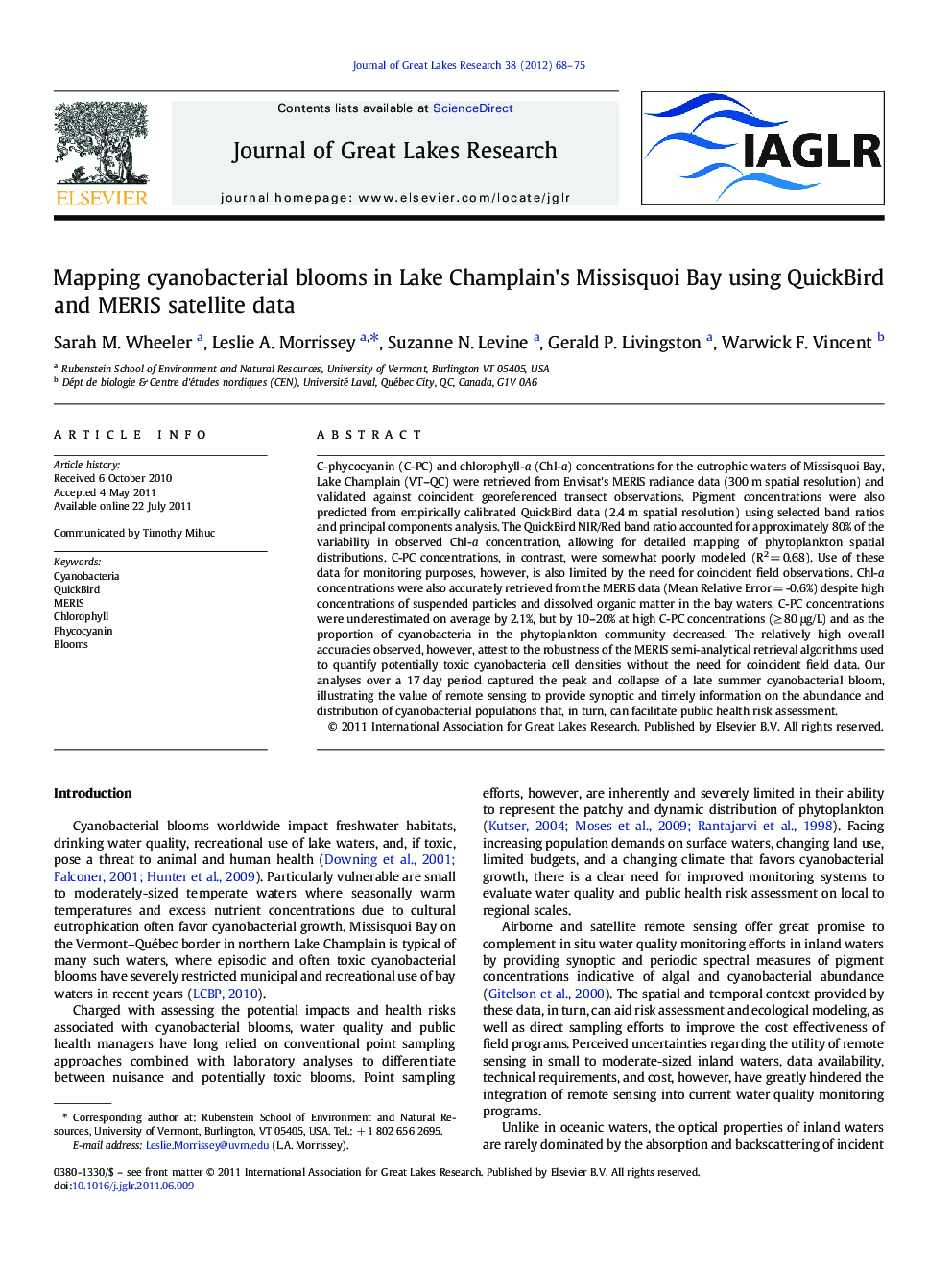| کد مقاله | کد نشریه | سال انتشار | مقاله انگلیسی | نسخه تمام متن |
|---|---|---|---|---|
| 4398554 | 1306695 | 2012 | 8 صفحه PDF | دانلود رایگان |

C-phycocyanin (C-PC) and chlorophyll-a (Chl-a) concentrations for the eutrophic waters of Missisquoi Bay, Lake Champlain (VT–QC) were retrieved from Envisat's MERIS radiance data (300 m spatial resolution) and validated against coincident georeferenced transect observations. Pigment concentrations were also predicted from empirically calibrated QuickBird data (2.4 m spatial resolution) using selected band ratios and principal components analysis. The QuickBird NIR/Red band ratio accounted for approximately 80% of the variability in observed Chl-a concentration, allowing for detailed mapping of phytoplankton spatial distributions. C-PC concentrations, in contrast, were somewhat poorly modeled (R2 = 0.68). Use of these data for monitoring purposes, however, is also limited by the need for coincident field observations. Chl-a concentrations were also accurately retrieved from the MERIS data (Mean Relative Error = -0.6%) despite high concentrations of suspended particles and dissolved organic matter in the bay waters. C-PC concentrations were underestimated on average by 2.1%, but by 10–20% at high C-PC concentrations (≥ 80 μg/L) and as the proportion of cyanobacteria in the phytoplankton community decreased. The relatively high overall accuracies observed, however, attest to the robustness of the MERIS semi-analytical retrieval algorithms used to quantify potentially toxic cyanobacteria cell densities without the need for coincident field data. Our analyses over a 17 day period captured the peak and collapse of a late summer cyanobacterial bloom, illustrating the value of remote sensing to provide synoptic and timely information on the abundance and distribution of cyanobacterial populations that, in turn, can facilitate public health risk assessment.
► Peak and collapse of cyanobacterial blooms tracked in Missisquoi Bay, Lake Champlain
► Chl-a and phycocyanin concentrations mapped using MERIS and QuickBird imagery
► Inversion algorithms estimated pigment concentrations in turbid, eutrophic waters
Journal: Journal of Great Lakes Research - Volume 38, Supplement 1, 2012, Pages 68–75